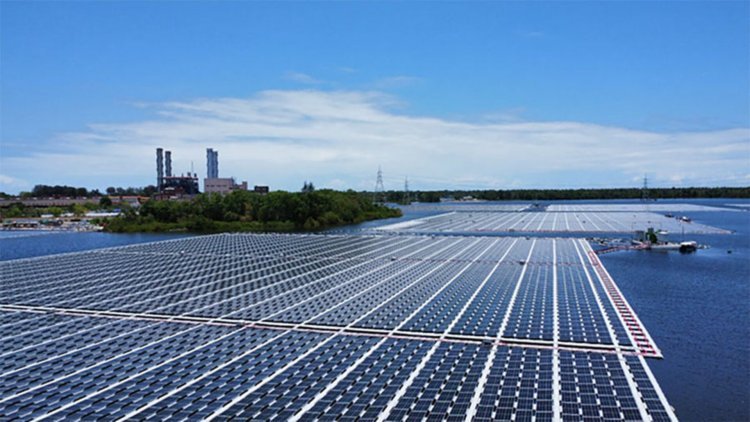Telangana is home to the largest floating solar power installation in India
Under an Engineering, Procurement and Construction contract, the energy conglomerate National Thermal Power Corporation (NTPC) put up a 100 megawatt (MW) facility through Bharat Heavy Electricals (BHEL).

At Ramagundam in Telangana, the biggest floating solar power project in India is now completely operational.
The 100 megawatt (MW) plant was built by the energy company National Thermal Power Corporation (NTPC) through Bharat Heavy Electricals (BHEL) under an Engineering, Procurement and Construction (EPC) contract.
The plant at Ramagundam in the Peddapalli district has been fully commissioned with the commercial operation of the last component capacity of 20 MW.
The NTPC installed the plant inside the thermal power station's reservoir to save important land resources and conserve water by lowering evaporation.
This is the largest floating solar plant in the nation that is located in a single place, according to officials. Water conservation is aided by the existence of floating solar panels, which ensure that the rate of evaporation from water bodies is decreased.
The project is anticipated to contribute to preventing the evaporation of 32.5 lakh cubic metres of water annually. The annual usage of 1,65,00 tonnes of coal and 2,10,000 tonnes of CO2 can both be reduced.
The 500-acre solar photovoltaic project was constructed at a cost of Rs 423 crore.
The plant is expected to ensure that the aquatic habitat is maintained while generating clean power because it is outfitted with cutting-edge technology and environmentally beneficial features.
The project is broken down into 40 blocks, each of which has 2.5 MW, according to the Ministry of New and Renewable Energy. One floating platform and an array of 11,200 solar modules make up each block.
The floating platform consists of one inverter, transformer and a HT breaker. The solar modules are placed on floaters manufactured with High Density Polyethylene (HDPE) material.
Through an unique High Modulus Polyethylene (HMPE) rope, the complete floating system is connected to the dead weights positioned in the balancing reservoir bed.33KV subterranean cables are used to evacuate the power up to the current switch yard.
Solar PV modules, floaters, biodegradable natural ester oil filled inverter-duty transformers, switchgear, SCADA (supervisory control and data acquisition), and cables are the main indigenous parts of the solar plant.
The total commercial operation of floating solar capacity in the southern region has increased to 217 MW with the commissioning of the Ramagundam plant, according to NTPC.
Officials from NTPC claim that installing floating solar panels on large reservoirs and waterways allows them to reduce costs. When compared to plants that are placed on the ground, floating solar units are more affordable.
Due of their benefits, the Maharatna firm favours solar floating plants. It intends to install solar projects at all of the nation's thermal power plants.
Five acres of land are needed for a one MW solar photovoltaic plant to be built on the ground, hence the NTPC is opting for a floating approach because it is getting harder to acquire land.
The NTPC Southern Region intends to concentrate on floating solar projects due to the high number of significant reservoirs in South India.
Other advantages include less water evaporation, cheaper grid connectivity, less algal blooming, and better water quality.
The floating solar power plant in Ramagundam is anticipated to increase Telangana's overall percentage of renewable energy output. In Telangana, there are now about 4,000 MW of installed renewable energy capacity, including solar.




 Anusha
Anusha 




















